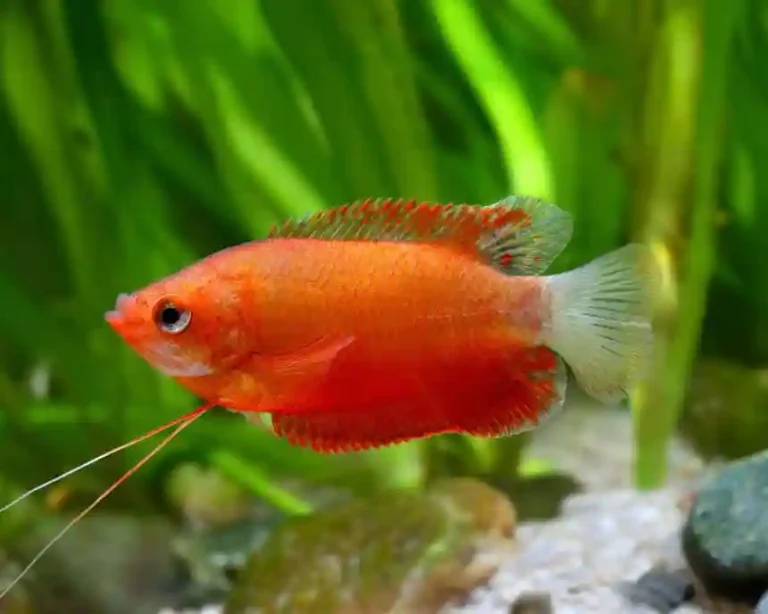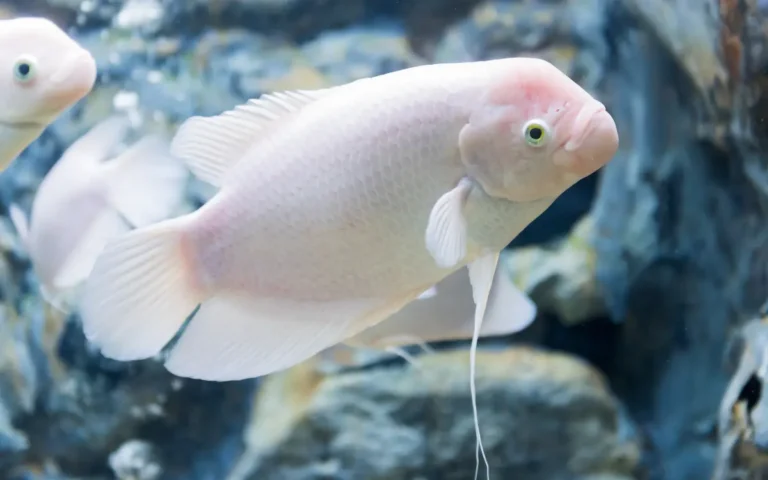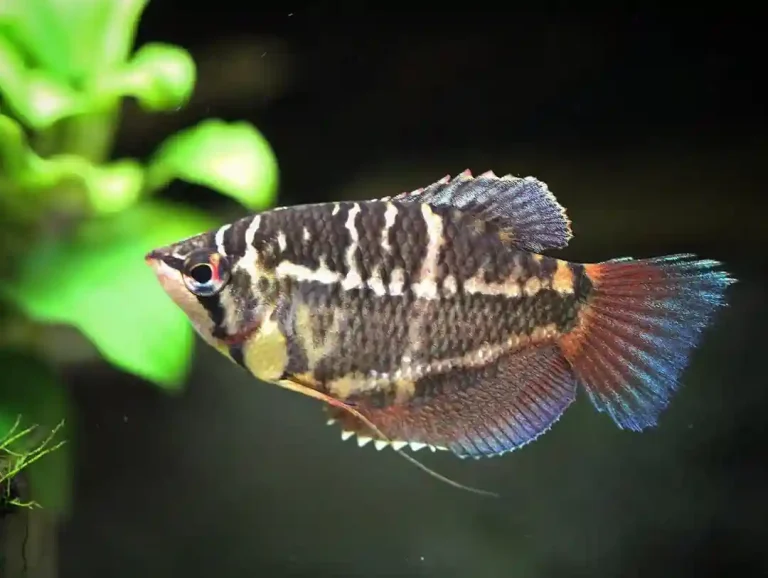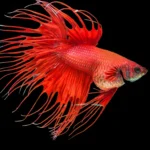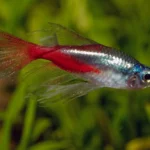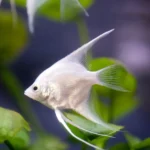Fantail goldfish are a classic fancy variety known for their egg-shaped bodies and beautiful split tails. They’re beginner-friendly yet elegant enough to appeal to advanced aquarists. If you’re looking to keep a hardy, ornamental goldfish, fantails are a great choice.
This care guide covers everything you need to keep your fantail healthy and happy—from tank setup to feeding and tank mates.
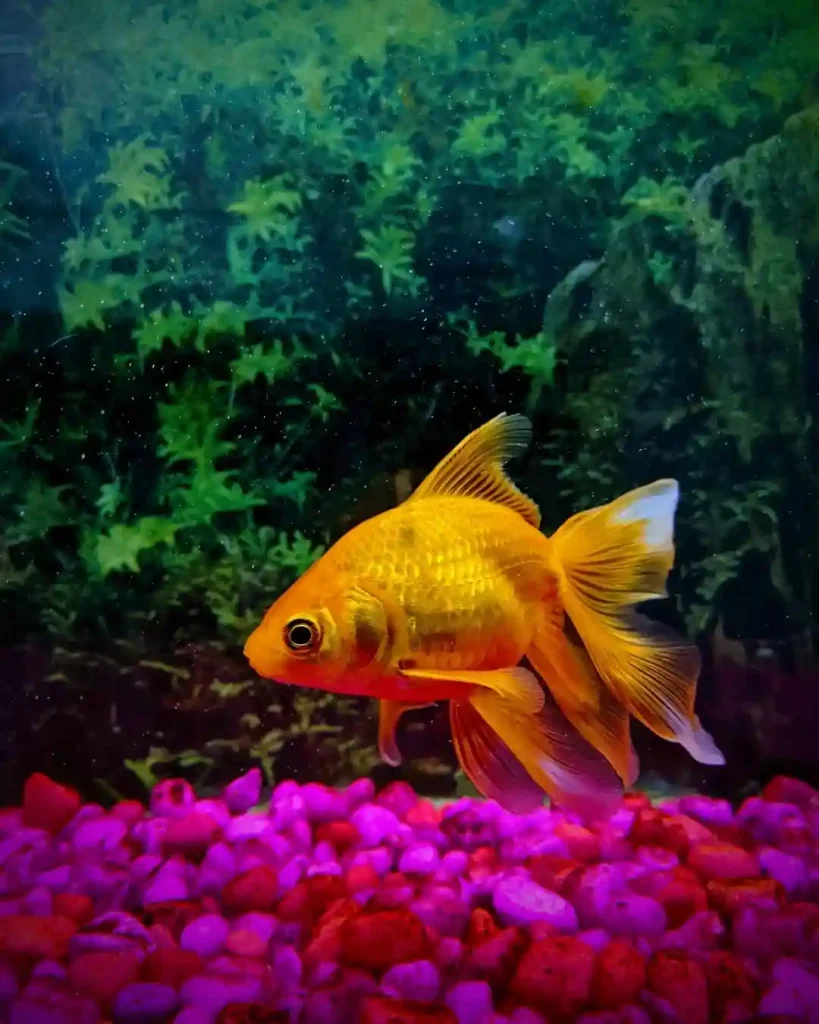
Quick Species Profile
| Feature | Details |
| Scientific Name | Carassius auratus (Fantail) |
| Common Name | Fantail Goldfish |
| Size | 6–8 inches |
| Lifespan | 10–15 years |
| Origin | China, developed in Japan |
| Temperament | Peaceful, slow swimmer |
| Tank Size | 20+ gallons per fish |
| Temperature | 65–75°F |
| pH Range | 6.5–7.5 |
What Is a Fantail Goldfish?
The fantail is one of the oldest and most common fancy goldfish varieties. It has a rounded body, a double (split) tail fin, and upright dorsal fin. While it’s similar in shape to the Ryukin, the fantail has a less pronounced hump on its back.
Fantails come in a range of colors including orange, red, white, calico, and metallic gold. Their balanced shape and swimming ability make them less delicate than other fancy types like bubble eyes or telescope goldfish.
Lifespan
With proper care, fantail goldfish typically live 10–15 years. Clean water, adequate space, and a good diet are essential to help them reach their full lifespan.
Size & Growth
Fantails grow to around 6–8 inches in length. Like all goldfish, they continue growing throughout their life, especially if housed in a spacious tank or pond with good care.
Tank Size & Setup
A single fantail goldfish needs at least a 20-gallon tank, with an additional 10–15 gallons per extra fish. Because they’re slow swimmers with long fins, avoid tanks with strong current.
Tank setup tips:
- Use fine gravel or sand to protect their fins
- Include live or silk plants for enrichment
- Avoid sharp or rough decorations
- Provide open swimming space
Fantails do well in aquariums and small ponds, as long as temperature and cleanliness are maintained.
Read also: Shubunkin Goldfish Care Guide: Tank Setup, Feeding, Size & Tips
Water Parameters
Maintain these ideal water conditions:
- Temperature: 65–75°F (18–24°C)
- pH: 6.5–7.5
- Ammonia/Nitrite: 0 ppm
- Nitrate: <40 ppm
Weekly water changes (25–50%) and a reliable test kit will help keep their environment safe.
Filtration
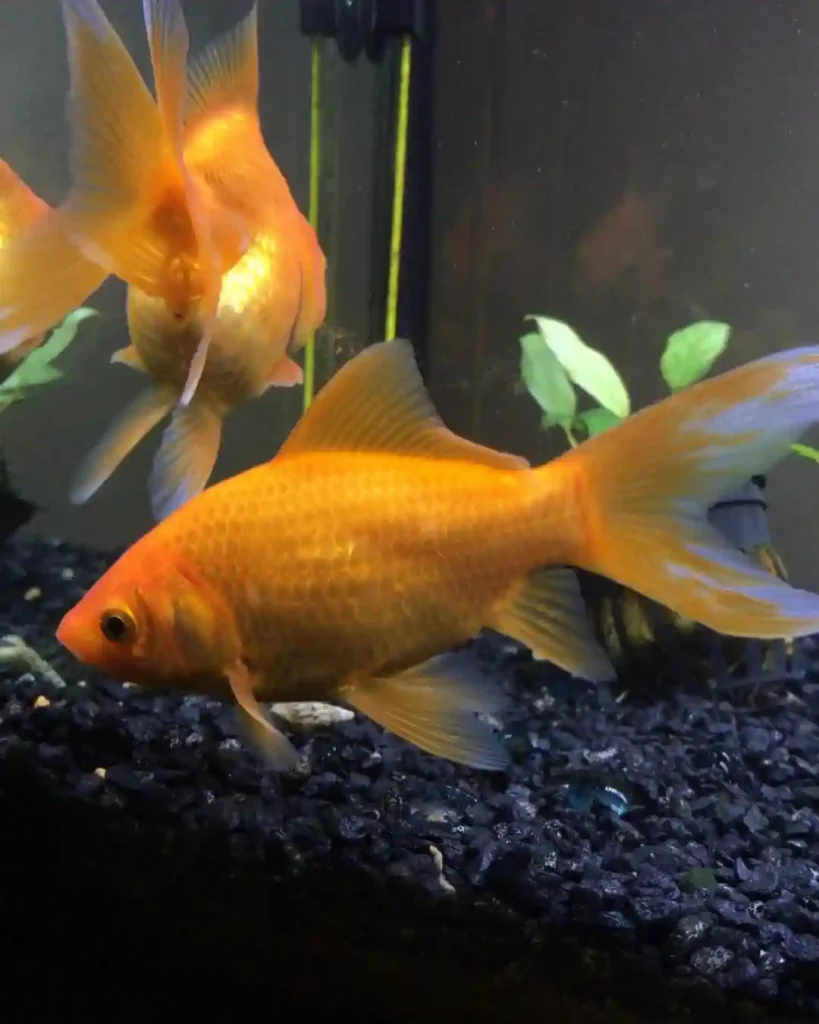
Fantails are messy eaters and high waste producers. Use a filter rated for at least twice your tank size. Combine sponge filters with a hang-on-back or canister filter for mechanical and biological filtration.
Diet & Feeding
Fantails are omnivorous and should be fed a balanced diet:
- Fancy goldfish pellets (sinking preferred)
- Blanched veggies (peas, spinach, lettuce)
- Frozen or live treats (brine shrimp, bloodworms)
Feed 1–2 times a day. Offer small portions they can finish in 2 minutes. Avoid floating flakes if buoyancy issues occur.
Behavior & Temperament
Fantail goldfish are peaceful, curious, and social. They are slower than common or comet goldfish, so keep them with other slow-swimming fancy types.
They enjoy interaction and may recognize feeding routines and their owners.
Tank Mates
Ideal tank mates include:
- Other fancy goldfish (Ranchu, Oranda, Black Moor)
- White cloud mountain minnows
- Peaceful snails (like nerites)
Avoid:
- Fast swimmers (comets, commons)
- Fin-nippers (barbs, tetras)
- Tropical fish needing warm water
Read also: Fancy Goldfish Care Guide: Types, Tank Setup, Feeding & Health
Common Health Problems
Fantails can suffer from:
- Swim bladder disorder
- Ich (white spot disease)
- Fin rot
- Constipation
Most problems are preventable with clean water and a proper diet. Quarantine new fish and feed fiber-rich veggies regularly.
Breeding Fantail Goldfish
Fantails are egg scatterers. Males develop white breeding tubercles on their gill plates when ready to spawn. They chase females to stimulate egg laying on surfaces.
Remove adults after spawning, as they may eat the eggs. Keep fry in a separate tank and feed with infusoria or baby brine shrimp.
Final Thoughts
Fantail goldfish combine beauty and hardiness, making them perfect for both new and experienced aquarists. With the right care, they’ll reward you with years of graceful swimming and interaction.

